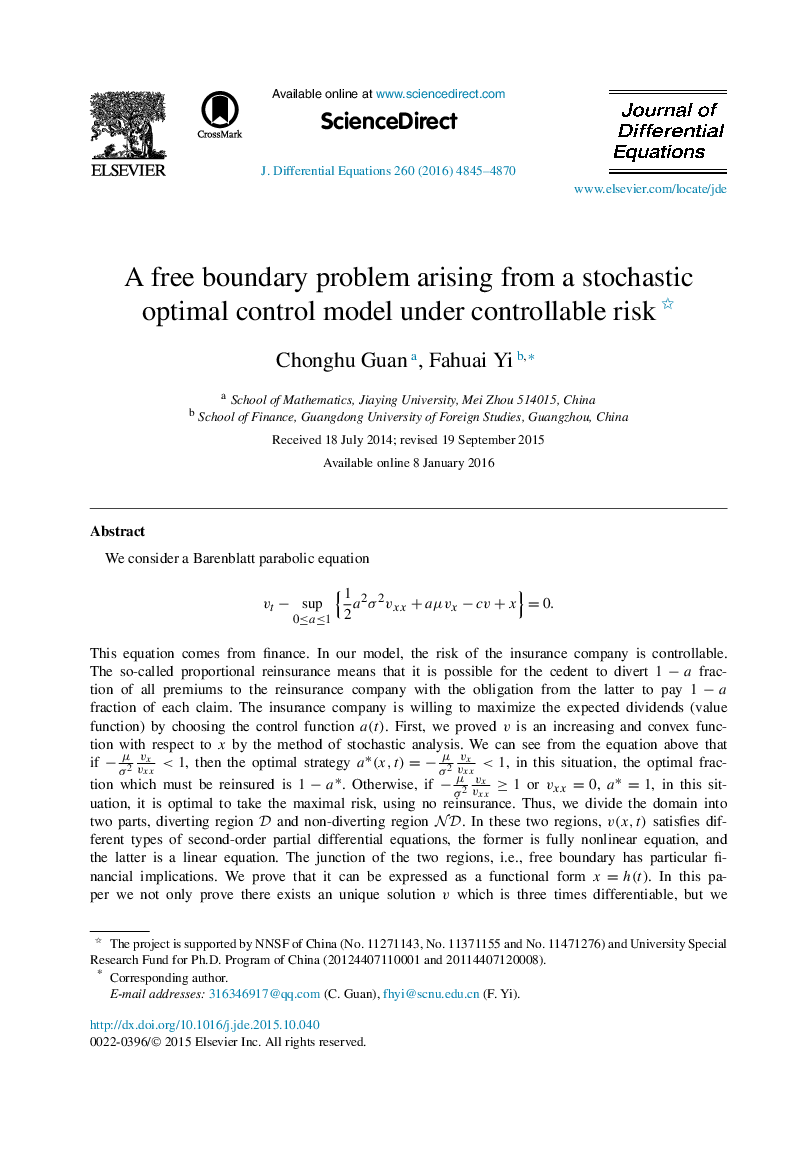| Article ID | Journal | Published Year | Pages | File Type |
|---|---|---|---|---|
| 4609727 | Journal of Differential Equations | 2016 | 26 Pages |
•The proof of the concavity of the value function by the methods of PDE and stochastic analysis are given separately.•We prove that the equation is degenerate in the left boundary but non-degenerate interior.•We give high regularity of the solution (value function), we prove it is 3 times differentiable.•We prove that the free boundary h(t)h(t) is a differentiable curve and show its upper and lower bounds and starting point h(0)=0h(0)=0.
We consider a Barenblatt parabolic equationvt−sup0≤a≤1{12a2σ2vxx+aμvx−cv+x}=0. This equation comes from finance. In our model, the risk of the insurance company is controllable. The so-called proportional reinsurance means that it is possible for the cedent to divert 1−a1−a fraction of all premiums to the reinsurance company with the obligation from the latter to pay 1−a1−a fraction of each claim. The insurance company is willing to maximize the expected dividends (value function) by choosing the control function a(t)a(t). First, we proved v is an increasing and convex function with respect to x by the method of stochastic analysis. We can see from the equation above that if −μσ2vxvxx<1, then the optimal strategy a⁎(x,t)=−μσ2vxvxx<1, in this situation, the optimal fraction which must be reinsured is 1−a⁎1−a⁎. Otherwise, if −μσ2vxvxx≥1 or vxx=0vxx=0, a⁎=1a⁎=1, in this situation, it is optimal to take the maximal risk, using no reinsurance. Thus, we divide the domain into two parts, diverting region DD and non-diverting region NDND. In these two regions, v(x,t)v(x,t) satisfies different types of second-order partial differential equations, the former is fully nonlinear equation, and the latter is a linear equation. The junction of the two regions, i.e., free boundary has particular financial implications. We prove that it can be expressed as a functional form x=h(t)x=h(t). In this paper we not only prove there exists an unique solution v which is three times differentiable, but we also prove x=h(t)x=h(t) is a differentiable curve, and we show its upper and lower bounds and starting point h(0)h(0).
